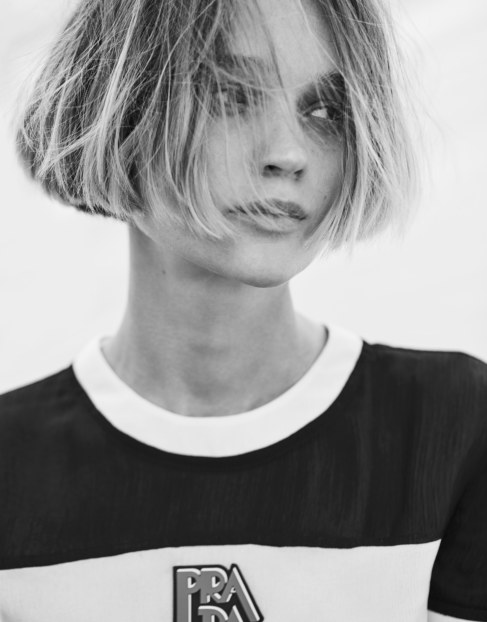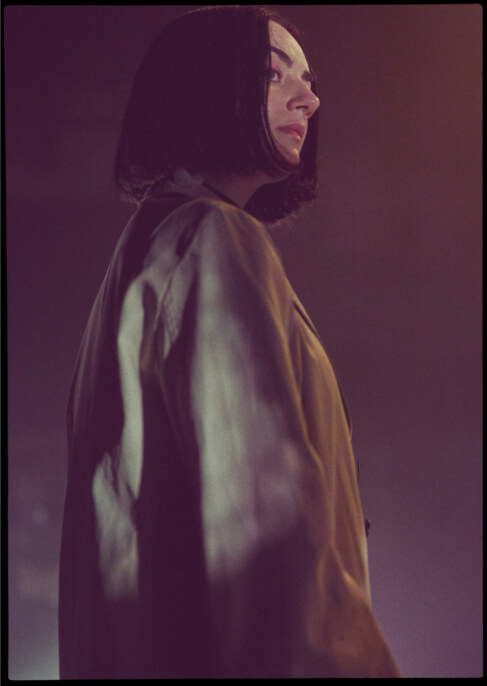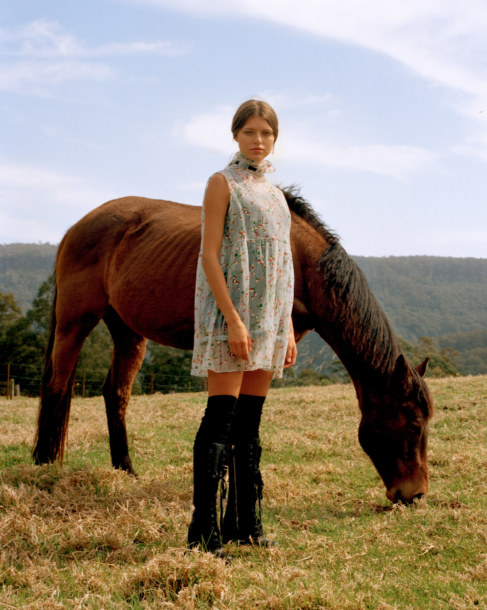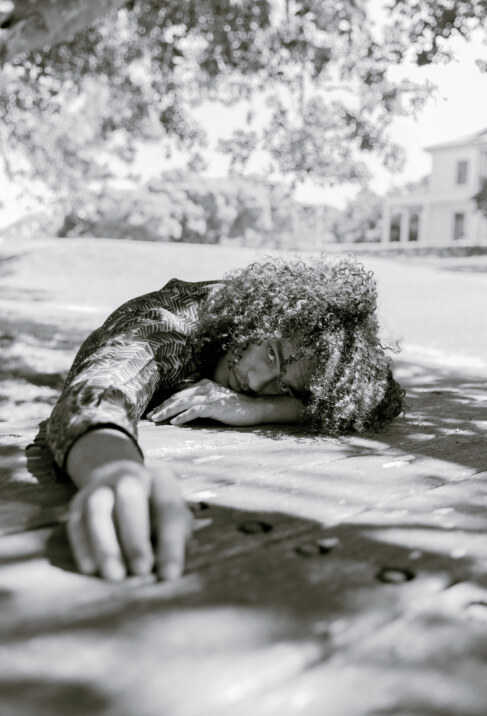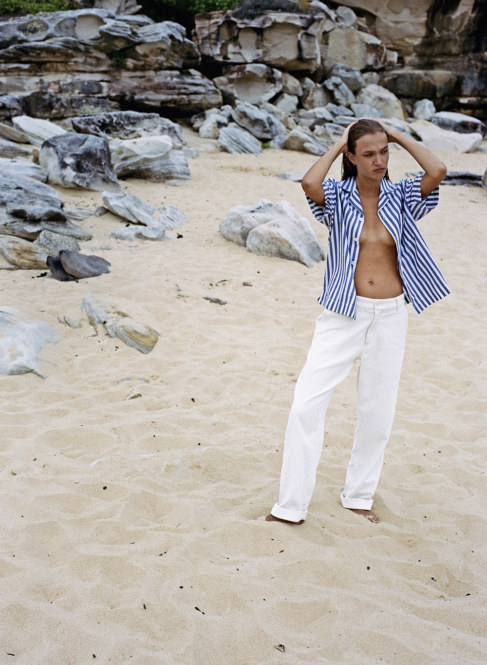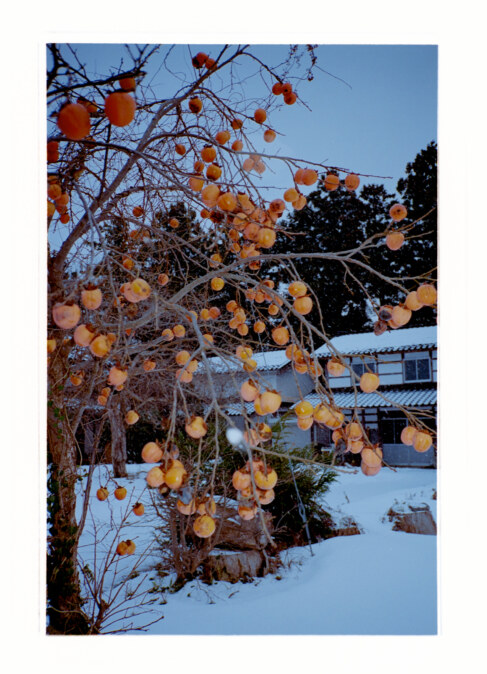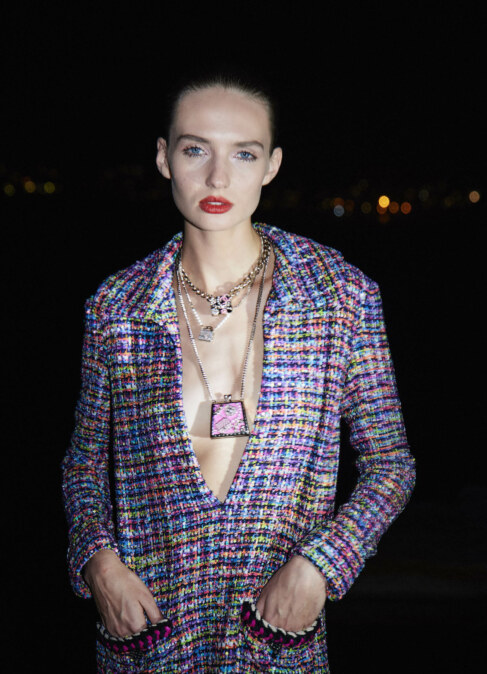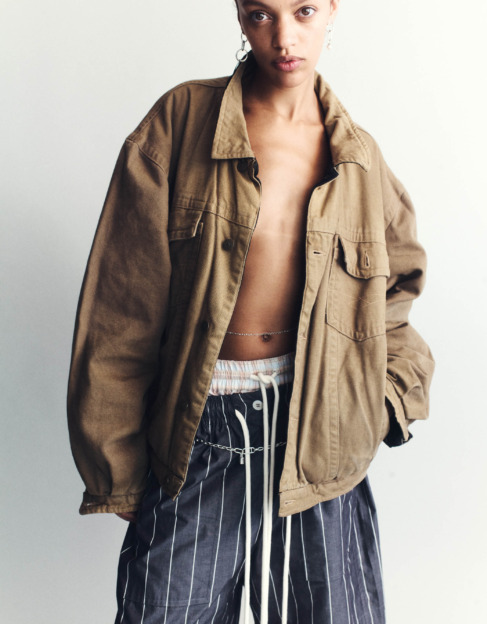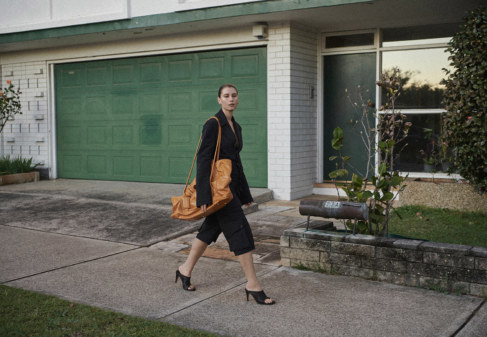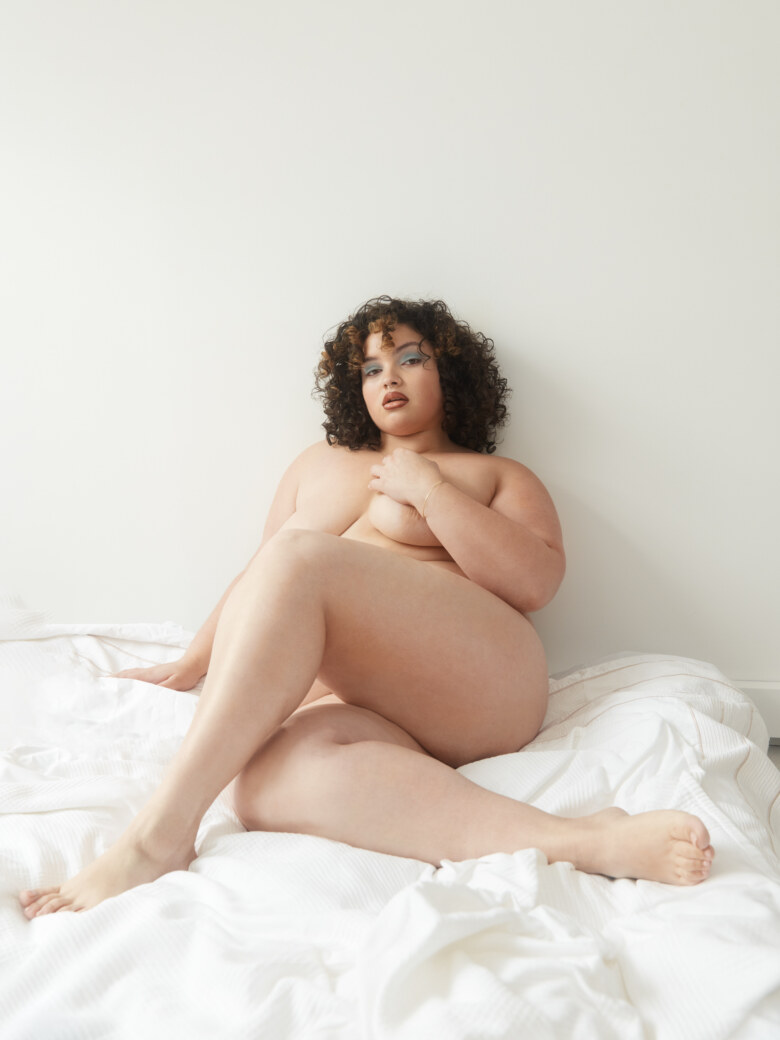
THE ART OF TAKING UP SPACE – MIA DENNIS BY AMELIA DOWD
PHOTOGRAPHER: Amelia Dowd
TALENT: Mia Dennis
HAIR & MAKEUP ARTIST: Carly Lim
WORDS: Bianca Farmakis
Breaking rules and boundaries is inherent to how model Mia Dennis operates on set. The 23-year-old fresh face has already graced the catwalk of Australian Fashion Week, and magazine shoots months into her career. Her editorials portray cosmic wonderlands, her style adopts electric colour palettes, her campaigns carve out space for curve and queer models alike.
Her mission, though, is to refocus the purpose of fashion.
“Fashion still has [a] whole aspirational thing about it,” she says.
“We should be celebrating humanness – who we are, our cultures, our feelings. It’s a form of art and shouldn’t be governed by so many rules.”
The role the body plays in fashion in recent years has witnessed a myriad of combative shifts. Publicly, a movement has rippled across the industry, calling for greater representation of marginalised groups. The campaigns and clothes within the fashion world began to acknowledge the folly of the beauty standard that dictated it for decades.
But privately, particularly in the midst of lockdown, many battled with their relationships with their physiques, as we were confined to close quarters, becoming hyper conscious not only of the spaces we lived in, but the bodies we call home. Dennis says she was among the many that struggled with their physical self during the period. Her shape changed during the years of collective grief, burning down to a harrowing, but familiar battle: discomfort in your own skin.
It was a shift that impacted her career in fashion.
“Before being the size that I am now, my shape was starting to be celebrated,” she shares, recalling campaigns that redefined the standards of sizing. Nike introduced curve athleisure, sparking a ripple effect through the industry, Baywatch reinvented itself with a size-inclusive edition of the memorable red swimsuit.
“I had more options in terms of sizing, when I was a 12 – 14. But once I was a 16 – 18, I started noticing that there was less room for me.”
Dennis began modelling again, concurrent with the rise of ‘heroin chic’, and the Y2K aesthetic. Looks that were born in the “Tumblr Era” of the early 00s and late 90s came roaring back into style as the world resorted to imagining itself creatively in a pre-pandemic climate. Alongside the return of low rise jeans came the glamourisation of thinness – a dark renaissance of rigid body standards that Dennis says impacted her experience in the industry.
“I’ve felt gaslit at times in this business,” she shares, recalling a shoot where she was told to wear a g-string that did not fit her on set.
“You could tell that the sizing of the piece was just literally fit according to a little body and [they’d] just used extra fabric to make it bigger. There was no consideration of how my shape would be different, or any use of a fit model of a bigger size.”
Of the shoots Dennis has done, she says an overwhelming majority – she puts the figure at around three-quarters – neglect to provide, style or create clothes that fit above a size 14. It’s a sentiment echoed across curve models globally.
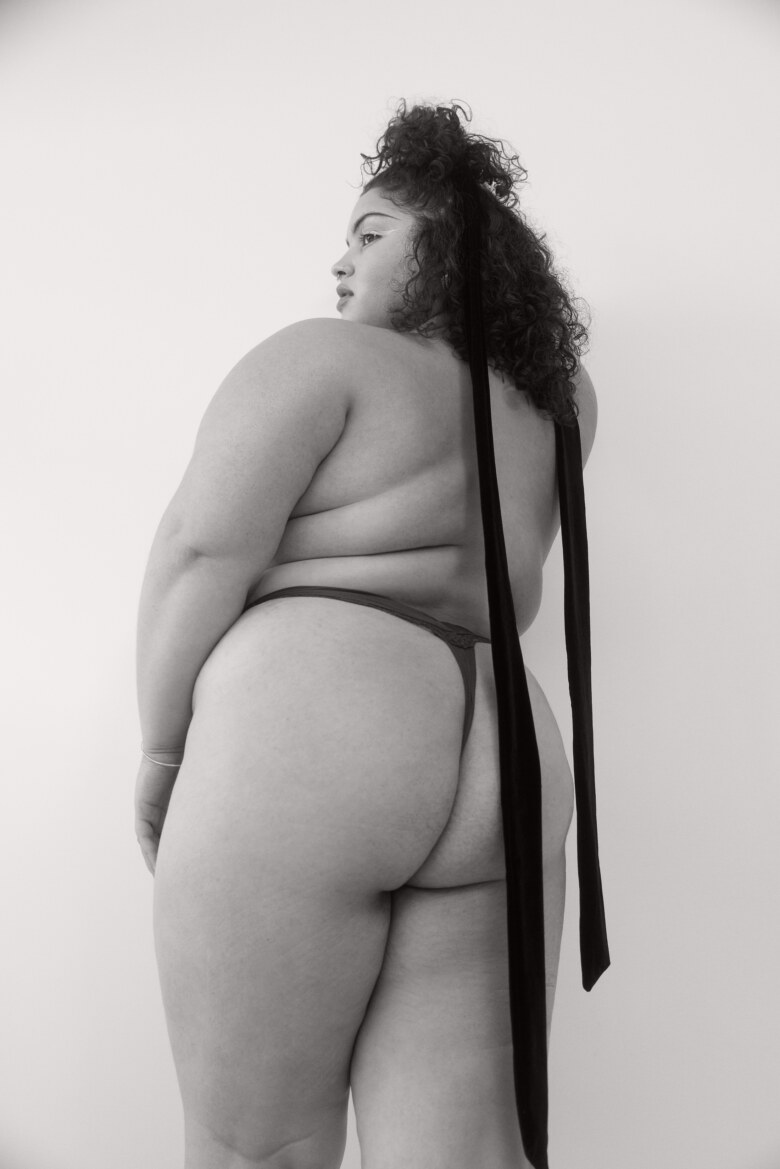

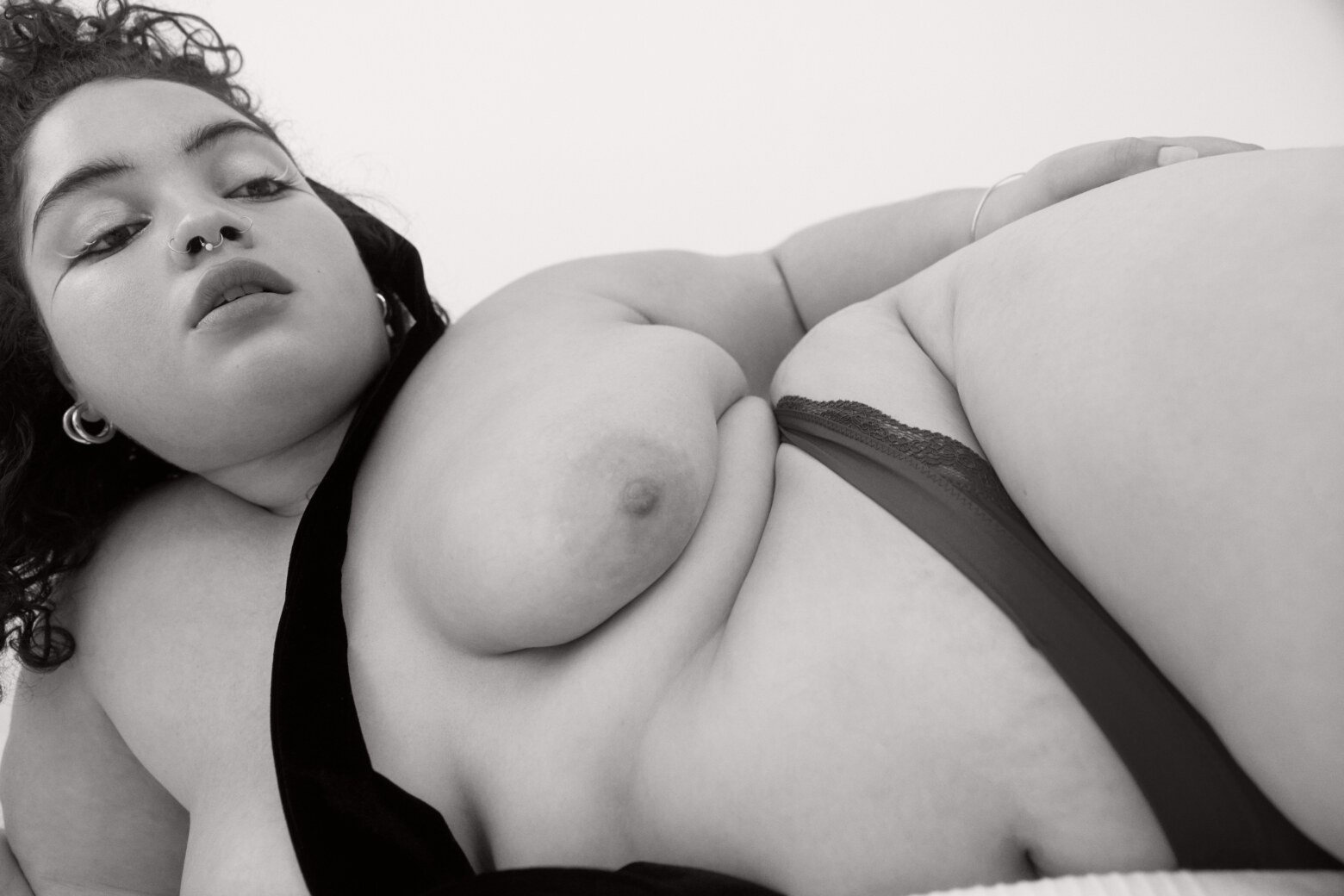
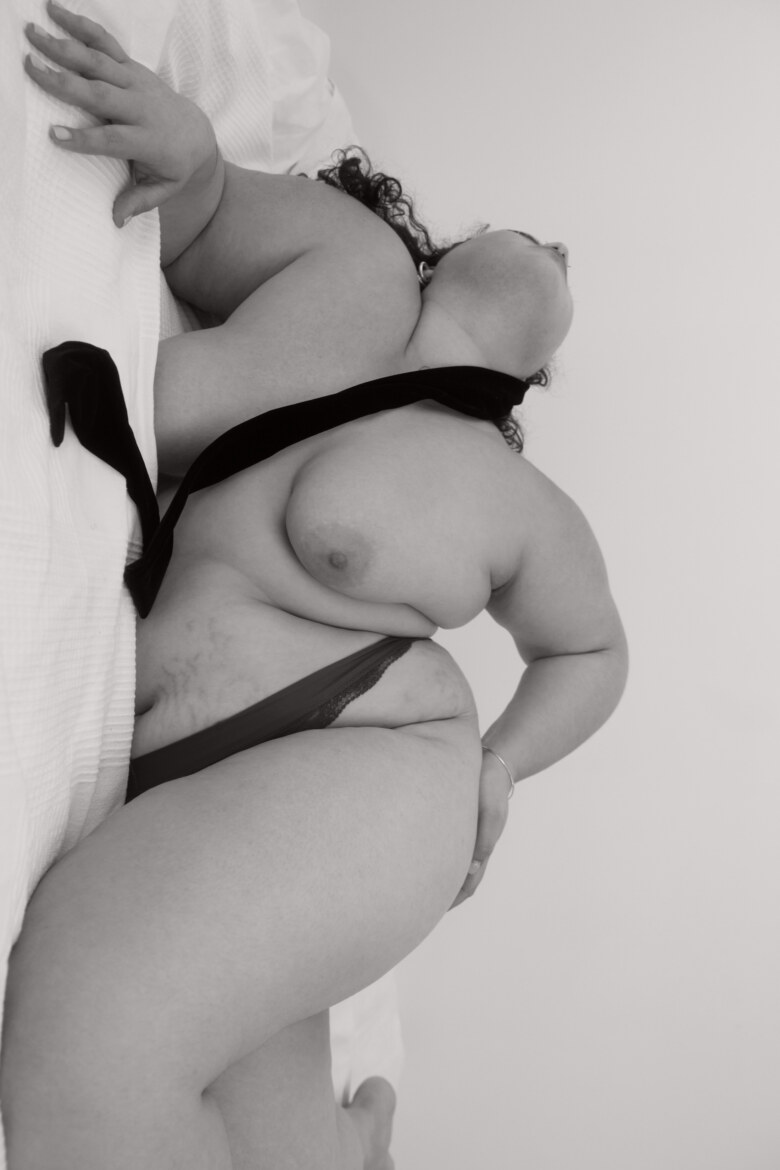
Australian model Mahalia Handley previously noted the market is missing out on 68 per cent of their buying power by not providing garments beyond a size 14. Curve fashion influencer Stephanie Yeboah, wrote on Twitter in May that size-inclusive shoots rarely used models above a size 8.
The sizing situation, Dennis says, is more than neglectful or humiliating – it’s also ignorant, considering the average female figure in Australia is a 16.
“A lot of the time experiences like that leads me to a point where I wonder ‘do you want to continue?’,” Dennis says. We discuss for every Paloma Essler magazine cover or Ashley Graham catwalk appearance, there remains a wealth of fat-phobia halting progress.
“ I think as much as some changes have been made, there is still such a long way to go,” she adds, noting being part of “the change” remains a driving part of the shift is was keeps her going.
Change has been a concept humanity has long struggled with, whether it be adapting to extenuating circumstances of our environment, or deviating from the norm we’ve become accustomed to. Dennis says it’s a phenomenon that she has found has helped her seek comfort in taking up space.
“The journey of relationship with our bodies is ongoing. Our bodies change and we forget that’s just a reality,” she shares.
At this point in our conversation, I tear up telling Dennis that I can’t recall a single dinner table conversation that didn’t bring up the idea of how a body should appear, and the perils of obtaining that image. Ideas around self-expression, dressing to amplify aspects of your character, no matter how pure or earnest, remain loaded with the perception of what we should look like rather than how we want to.
“Cynicism is the great mask of the disappointed and betrayed heart,” bell hooks writes in her latest book all about love, pinpointing the barriers that keep us from total self-acceptance boil down to a fear of accepting love.

Dennis says her relationship with herself shifted when she found a seat at the table was pulled out for her, not by elite editorials, or model management, but by the people she chose to be her family, ones that loved her unequivocally, to quote Bridget Jones’ Diary, “just as you are.”
“My community, helped me learn so much more about myself . They made me feel like I have a seat at the table. I think they’re the people that I look up to and the most,” she says.
“A lot of the things that I love about myself as being like from what my friends have showed me. Too often we forget how powerful that really is.”
BF: How would you define the word “re-claim”?
MD: “I think it’s like… changing the narrative. For too long I have had to face people who’ve said things about me or to me like it was a fact. But I didn’t take them on. I decided only I get to define myself.”
___
SIDE-NOTE acknowledges the Eora people as the traditional custodians of the land on which this project was produced. We pay our respects to Elders past and present. We extend that respect to Aboriginal and Torres Strait Islander peoples reading this.
